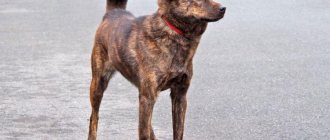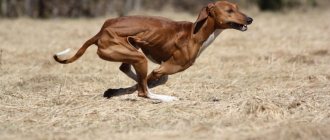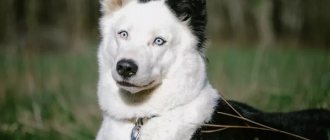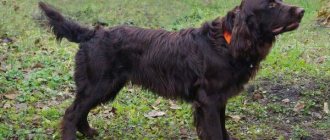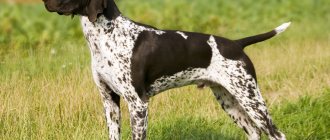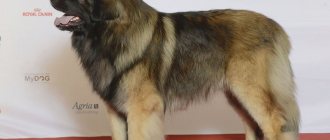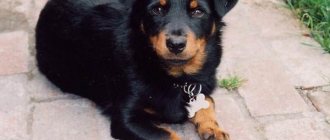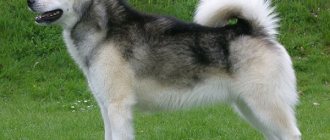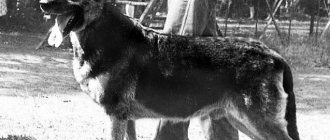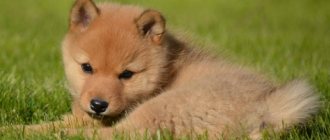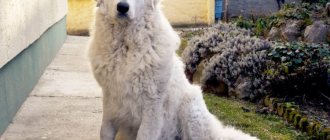Origin story
Tazis are one of the oldest breeds, belonging to the eastern group of greyhounds. Experts have repeatedly drawn attention to its close relationship with the Arabian Saluki and some other eastern hounds: the Afghan luchak and the Russian steppe hound. The history of the appearance of the breed goes back to the 8th century and is associated with the invasion of Arab-Muslim warriors into the territory of modern Kazakhstan, Uzbekistan and Turkmenistan.
During the long wars, some territories of the Central Asian region became part of the Arab Caliphate and were inhabited by Arab warriors and Bedouin tribes. The strangers did not come to the Central Asian expanses empty-handed: they brought property with them, brought in livestock and brought their greyhound hunting dogs - the direct ancestors of modern Tazy. Over time, the indigenous people learned to hunt with the help of the new breed and quickly came to appreciate and love these beautiful, proud dogs.
Then, with the beginning of the Tatar-Mongol invasion of the 12th-13th centuries, greyhounds were brought to the areas north of the Syr Darya and quickly spread throughout Central Asia from the steppes of Mongolia to the Crimea itself. This is due to the fact that after the conquest of Khorezm and the destruction of the Baghdad Caliphate, the Tatar-Mongols appreciated the breed they saw and began to take its representatives to their native places. This led to the formation of 2 species of steppe greyhounds in the territories of Central and Central Asia - Turkmen and Kazakh tazy .
Some experts tend to classify Uzbek greyhounds , but in fact the group is very heterogeneous and includes, rather, not a separate variety of the breed, but transitional types and local varieties of two main groups. The formation of the Tazy was greatly influenced by climatic conditions and landscape, thanks to which it was possible to obtain a unique breed, the representatives of which perfectly tolerated the hot steppe climate, thrived in the absence of humidity and did not pay attention to the hot sand.
The new breed very quickly gained honor and won the respect of people, as a result of which it occupied a special position in society. Thus, animals raised in the dry desert were kept clean and received the most worthy individual care.
The dogs were groomed and cherished, they were given the best place in the home and food from the master's table, and the pet often got the best piece. Housewives sewed soft mattresses and pillows for them, and in order for the animal not to suffer from cold and heat, they were dressed in carefully sewn blankets, decorated with ribbons and embroidered with beads.
During the hunt, in order not to waste the dog’s strength, the owner put it on a horse with him. For this purpose, a special basket was installed behind the saddle, in which the basins sat majestically. In addition, the owners were very proud of their pets and elevated them to the rank of family treasures.
This continued until the proclamation of Soviet power and the entry of the Central Asian republics into the Soviet Union. Thus, by the beginning of the 30s of the last century, the number of Tazy livestock in these regions decreased significantly, and in some places the dogs disappeared completely. However, concerned admirers of age-old national traditions did not allow the breed to disappear, taking immediate measures for its rapid restoration.
Thanks to the efforts of these people, by 1938 the number of Tazy in Kazakhstan alone approached 7 thousand individuals. However, the breed could not return its former glory and honor. This is primarily due to the passing of the classical model of hunting using horses and dogs into the past.
People began to engage in more poaching, using motorcycles and cars and blinding frightened animals with a bright spotlight. Therefore, over time, the need for greyhounds disappeared, and basins practically ceased to be used for their intended purpose. In this regard, most of the Kazakh pure lines of the breed were lost, which is associated with the greater secularism of society that formed in the republic.
In more conservative Turkmenistan, there were much fewer immigrants with a European way of life, and therefore it was possible to preserve most of the national traditions and relics. Among them was the Turkmen greyhound, which retained the purity of its blood and did not lose the high working qualities of an unsurpassed hunter.
Due to the rapid development of urbanization in the Central Asian republics, Tazy “came” to the city. The dog began to be raised as a pet and shown at exhibitions. The debut of the Kazakh and Turkmen lines of tazy took place in 1958 at the First All-Union Exhibition, which was held in the capital. The event was attended by service and hunting dogs, among which were 12 Kazakh and 2 Turkmen greyhounds.
However, for the sake of fairness, it is worth noting that the debut took place only for the Kazakh Tazy. The Turkmen line has already participated in the “Moscow Hunter” exhibition, held in 1927 in Moscow, where the dogs received their first well-deserved award.
In 1959, the first All-Union standard was drawn up for both lines of the breed - Kazakh and Turkmen, which remained unchanged for a long time. In 1995, the Russian Federation of Hunting Dog Breeding approved a new standard for the Uzbek-Kazakh Tazy.
In addition to the Central Asian republics, greyhound breeding kennels are located in the Baltic countries, Ukraine, Germany, Denmark and Finland. In Russia, breeders from St. Petersburg are engaged in breeding purebred Tazy.
However, the most serious obstacle to the development and popularization of the breed is its non-recognition by the FCI. This is due to the discrepancy between the current state of the breed and the conditions of the federation, as well as the late accession of Kazakhstan to cooperation with this organization.
Turkmen basins
Representatives of this breed have a bright red color, only the tips of the hair growing on the back, ears and dewlaps are black. Most Turkmen hunting dogs have dark hairs located on the tip of the nose and the area around the eyes. The following colors are less common: black and piebald, black, white and piebald. As a rule, Turkmens look after their Tazy dogs in the same way as they look after their favorite horse. They will always feed their furry assistant to the full, and in cold or intense heat they will cover him with a blanket. The future owner chooses his pet very carefully, studying its pedigree over several generations.
It is thanks to good care in Turkmenistan that dogs of the Tazy breed have always been distinguished by their silky coat, and also almost completely retained their external resemblance to their ancestors.
Kazakh basins
The Tazy dog breed, bred on the territory of Kazakhstan, cannot boast of either the gracefulness or excellent external characteristics that are characteristic of its Turkmen relatives. She has a shorter and coarser coat, a slightly “angular” muzzle and less undercut on her belly. They lost the elegance of the Saluki and also lost some of their hunting skills.
The fact that the Kazakh Tazy dog breed has undergone such serious changes is not at all surprising. And the main role in this was played not only by the climate and the terrain where the tribes breeding these greyhounds lived. The culprit is poor breeding work. The owners of the dogs absolutely did not keep track of what breed they crossed their pets with. Often the Tazys were mated with mongrel dogs, which seriously affected their working qualities.
Purpose of the basin
Like other greyhounds, Tazy hunts according to the “catch and kill” principle. These dogs are designed for running and unarmed hunting.
Moreover, very often they are afraid of being shot. Specimens that respond well to loud noises can retrieve prey from the water, but do not do so as passionately as a spaniel or retriever. Tazy have a good sense of smell; they prowl freely in front of the hunter, independently identify the animal and rush after it in pursuit. The element of tazy is running. These dogs chase everything that moves.
The main subject of hunting from the tazy remains the fox, hare, polecat, and badger. Several dogs can drive away a hoofed animal and a wolf. It is worth noting that for hunting wolves, the tazy are too small and often do not survive fights with the gray predator. When hunting, tazy animals use their eyesight, but they also follow the scent well, using their sense of smell, and show a tendency to fetch.
Taz hunters claim that these dogs never crash into obstacles, as happens with other high-speed breeds. Some amateurs use basins in joint hunting with a bird of falcon. The greyhound must be greedy for the animal, maneuverable, resourceful, have speed and have a good grip.
Some of the best hunters are Tazy
Judging by the characteristics and description of the breed, bred by the peoples living in Central Asia, the Tazy are very similar to their ancestors - the Persian Saluki. They have a dry body constitution. They grow to average and above average height. Despite its rather impressive external characteristics, this breed is distinguished by its balanced psyche. He has great physical strength and is very resilient. In their reviews, the dog's owners note that it is capable of developing impressive speed when pursuing prey, and is also persistent during the hunt. The animal is very agile both at short and long distances.
Taz puppies and teenagers are trained, as a rule, to hunt foxes and hares. Hunters say that they have a well-developed sense of smell and are able to smell the game before it notices the dog.
Perfect friends
Judging by the reviews of the owners, the dogs have a very soft and flexible character. Representatives of this hunting breed always make excellent companions for humans. They never show aggression towards strangers unless the situation requires it, which makes the dog safe for others.
Photos and videos
More photos of Tobet dogs can be seen in the gallery. The pictures show Kazakh wolfhounds of different genders, ages and colors.
Video about the dog breed Tobet (Kazakh Wolfhound)
The Central Asian Shepherd Dog (Alabai) is an ancient type of dog that arose in Central Asia as a result of harsh natural selection. Scientists have found a direct pedigree link between Asians and wolfhounds living in the vastness of Asia. First of all, it is an excellent watchman, capable of performing its functions in any weather, be it severe frost or sweltering heat. The dog is an indispensable assistant in hunting large animals. In many countries, the Alabai is a fighting dog, whose participation in battles is a tradition, for example, in Turkmenistan.
- Origin: USSR (regions of Central Asia - Afghanistan, Turkmenistan);
- Personality: strong and courageous, independent, calm and curious;
- Weight of female: from 40 to 65 kg, male: from 50 to 79 kg;
- Female height: 65 to 69 cm, male: from 70 to 78 cm;
- Dog color: straw, black, brindle, white, peebold, gray, rusty;
- Life expectancy: from 12 to 15 years;
- ICF classification: Group 2; Section 2; Subsection 2.2 (mountain dogs); No. 335.
The main quality of a dog is boundless devotion and lack of fear. Alabais are the best home defenders who are ready to defend the territory and household members until their last breath.
Content Features
Living in a private house would be optimal for Tazy, but walking around the yard should not be considered a full-fledged physical activity. Aviary keeping is allowed only if there are several dogs that will live together, regular exercise and human attention. A leashed dog will wither away. Tazy is a steppe dog that easily accelerates to 60 km/h, and some representatives of the breed reached speeds of 80 km/h.
A dog stuck at home is unlikely to be able to hunt. Tazis can live in an apartment, they have practically no specific dog smell, their fur is not thick, and also without undercoat, so there will be a minimum of it on the carpet. In the house, basins behave neatly and calmly, do not take up much space and are not a nuisance.
Keeping this smart hunting dog in the city has its own characteristics. Tazis are capricious, they can destroy an apartment in childhood, and run away during walks at any age. This is due to a very strong hunting instinct and the enormous speed that dogs develop in pursuit. They often run out onto the roadway and die under the wheels.
It’s good when the cans are started by hunters and the dog is used for its intended purpose. Otherwise, she needs to be given the opportunity to run out in the open at least once a week. Many owners don’t even allow their dog to do this, for fear that it will pick up the scent and get lost. There is a high probability that this will happen. Collars with GPS navigators have become a salvation for many.
Conditions for keeping
The optimal place for a Tazy to live is the countryside, where the pet will have enough space for games and fast, long runs. If the dog lives in the city, then the owner should take care in advance of a place for walking, where Tazy can run around and play with other animals for several hours a day.
Such dogs must cover several tens of kilometers every day, which is why they are the best companions for lovers of long hikes and bike rides. However, when traveling together, the dog must be kept on a leash. A pet that is carried away by a flying bird may rush after it and get lost.
In general, Tazy dogs are ideal dogs for keeping at home. Over many centuries of living in the same tent with humans, they learned not to throw food away, eat carefully and behave very decently. In addition, basins physically cannot live on the street, since the pet’s fur does not have an undercoat.
Taking into account all the nuances of the content, before buying a puppy you need to soberly assess your capabilities, and if at least one of the points is in doubt, then it is better to think about buying some other breed.
What to feed?
You can feed the basins with both natural food and prepared food. If you decide to feed your dog regular foods, then you need to remember that food from the human table is not suitable for your pet. The basis of the dog's menu is lean meat, which is recommended to be given fresh, cut into pieces and doused with boiling water. It should be at least 60% of the total serving volume, and the remaining 40% should be vegetables and cereals, flavored with a spoon of vegetable oil. Eggs should be given to your pet boiled and no more than twice a week.
The dog is also given boiled and pitted sea fish, seasonal fruits, cottage cheese and low-fat sour cream. It is forbidden to feed the bowls with sweets, baked goods, salty, smoked and fried foods, as well as products with a high content of dyes and preservatives.
From 5 months of age, dogs are additionally offered bone meal, fish oil and a complex of vitamins and minerals recommended by a veterinarian.
If the dog eats ready-made food, then it is better to opt for premium formulations containing all the substances necessary for the animal’s body.
Whatever the type of food the tazy is, the dog should have free access to fresh drinking water.
Pet care
Caring for the fur of the Turkmen greyhound is not difficult. Once a week, the greyhound can be bathed, after which the coat can be allowed to dry on its own or with a hairdryer. After returning home from a walk, the fur should be inspected for the presence of parasites and various grasses. You can comb the entire body with a special glove. Also, once a week, the owner should inspect and clean the pet’s ears, eyes and teeth. Long nails can be trimmed once a month if they do not get worn down while running.
A special part of caring for a greyhound is caring for the pet's long coat. This type of coat is prone to the formation of tangles, so the dog owner should monitor and, if necessary, comb the entire body, head and tail. Care can be complicated by the incorrect selection of shampoo and conditioner for the specific coat of the Kazakh greyhound.
Nutrition
The Turkmen Greyhound Tazy is a fairly unpretentious dog in terms of nutrition. Nevertheless, it is customary to feed the dog until it is full. During periods of particularly active play and training, the dog’s diet increases by one and a half times. Breeders recommend feeding the basins with professional super premium food. But if the dog is accustomed to regular food, then its diet should consist of lean meat, sea fish, various cereals, vegetables and fruits. Moreover, meat food should be at least 500 g per day. It is strictly forbidden to feed the bowls with salty, spicy, sweet or smoked foods. Such nutrition can cause various diseases in the dog, which can lead to the death of the animal.
Diseases of the breed
The average life expectancy of a Turkmen hound is 12-16 years. It is not accepted to talk about any genetic diseases of this breed due to the small number of individuals.
Tazy is a very strong breed of dog, but very sensitive to any pain. The pet must be protected from various injuries, especially when walking outside.
There are very few breeders of this breed. Due to the small number of livestock, inbreeding cannot be ruled out, which can cause various diseases and pathologies, such as:
- anemia;
- dermatitis;
- allergic reactions;
- diseases of the cardiovascular system;
- rickets.
In addition, the pelvis should not be taken for a walk immediately after eating, as dogs may develop intestinal volvulus.
Oddly enough, greyhounds living in rural conditions live longer than in urban ones. The quality and life expectancy of Tazy dogs depends on their care and lifestyle.
Like every breed of dog, Tazy dogs need vaccination and treatment for parasites. Preventive examinations by a veterinarian will reduce the risk of disease to a minimum.
The first vaccination of an animal is carried out at the age of 2 months. After the Tazy injection, you should not bathe or walk outside. It will take 12 days for immunity to develop after the vaccine. At this time, the owner should be near the dog almost constantly, as the greyhound’s health may worsen and the temperature may rise. This reaction is observed only with the first vaccine. Subsequent vaccination will not cause discomfort to the dog. But no matter what the vaccine is, walking on the street and contact with other dogs after the injection is contraindicated.
Before getting a Kazakh greyhound puppy, the owner should ask himself only one question: “Will I be able to create all the conditions for a Tazy dog to be happy?” Ideal conditions for a greyhound would be daily runs of several kilometers and free access to the outdoors.
| Intelligence: |
| Aggressiveness: |
| For security: |
| For children: |
| Training: |
| Difficulty in care: |
Tazy are bred for hunting purposes or as a companion. A dog of this breed has a sharp mind and clear vision, thanks to which it can easily track down and drive out an animal hiding in the bushes. The dog is beautiful and graceful in appearance, attached to its owner, but quite independent. Basins are divided into 2 types: Kazakh (powerful and tall) and Turkmen (refined and light).
Description of the breed
Due to the fact that at the moment the breed is not recognized by the International Canine Federation, the standardization of the livestock is carried out taking into account the latest approved standard from 1995. According to this document, the Tazy are two types of lean dogs. Individuals of the Kazakh type are taller than the Turkmen ones: the height of males is 60-70 cm, females - 55-65 cm. In the Turkmen branch, males grow up to 55-65 cm, females - up to 53-60 cm. The weight of individuals depending on gender and breed type ranges from 25 to 35 kg.
The description of the breed is as follows.
- The body of representatives of both species is elongated, with an index of the ratio of the length of the croup to the height at the withers - 100/103. Bitches are slightly more elongated than males, which is due to the need to feed several puppies at once. The muscles of the animals are quite dry, the bones are strong and very well developed. Thanks to this physique, dogs look quite strong, but at the same time not heavy.
- The skin of the taza is highly elastic and, without forming folds, tightly fits the body.
- The head has a somewhat elongated shape, it is quite dry, resembling a wedge when viewed from above. The occipital region is moderately expressed, and there is weak development of the sagittal crest. The stop is smooth and very weakly expressed.
- Expressive eyes are almond-shaped, and the color of the iris is always brown, absolutely independent of coat color. The look is very confident and understanding.
- The lips of the tazy are quite thin, fitting tightly to the teeth.
- The teeth are present in full, white and strong, meeting in a scissor bite.
- The nose in most cases has black pigmentation, however, in light greyhounds, brown shades are allowed.
- The ears are covered with long and wavy hair, have a thin structure and hang freely, touching the corners of the lips with their ends. Most often, they are set at the eye line or slightly higher and rise above the head thanks to elastic cartilage.
- The neck is set high, has a rounded or slightly compressed shape at the sides, and is somewhat elongated. In some dogs it curves slightly upward.
- The chest is wide and round, descending to the elbow joint.
- The back is straight or over-tracked . The loin is somewhat shortened, with clearly visible prominent muscles, and often has a slight convexity. The croup is wide and moderately sloping, the belly is tucked.
- The tail is thin, ends in a ring, is lowered just below the line of the body and resembles a saber. When the animal runs, it rises a little, but does not go higher than the line of the back.
- The front legs are straight, with well-developed forearm muscles, and stand parallel to each other. The pasterns have an elongated structure and are located slightly at an angle. The hind legs are set wider than the front legs, have long arms and vertical metatarsals.
- The coat is single-layered, with short, dense and very soft guard hair. There are burkas 6 cm long on the ears, feathering on the front and hind legs, and a beautiful fan-like pendant on the tail.
- The color can be white and gray with light speckling of the limbs and tan areas. Black, dark gray and red shades with specks to match the main coat are also allowed, and for black individuals - a white spot on the chest.
When describing the breed, one cannot fail to mention its achievements. So, despite its rarity and small numbers, Tazy is listed in the Guinness Book of Records as the fastest dog, capable of reaching a speed of 68.8 km/h. Thanks to high-speed running in the times of nomads, the tazy independently caught up with the beast, killed it and brought it to the owner. However, with the advent of firearms, such a need disappeared.
Today the breed is used mainly for hunting hare, but in the old days the dog worked with medium-sized horned animals, for example, gazelles.
Appearance
Tazis are dogs of medium height with strong but not heavy bones, a dry type of constitution, well-developed muscles, especially in the hips and lower back. The height of males at the withers is 55-70 cm, females - 53-65 cm. Turkmen-type basins are usually slightly smaller than those of Uzbek-Kazakh-type dogs.
The head is dry, long, when viewed from above, forming a sharp wedge. The lips are thin and fit tightly. the skull is moderately wide, with a weakly defined parietal crest and a moderate occipital protuberance. Stop smoothly. The ears are set at eye level or slightly higher. The nose is black, but may be brown in light-colored dogs. The eyes are large, oval-shaped, expressive, dark in color in any color.
The neck is long, approximately equal to the length of the head, rounded and slightly flattened on the sides, set high. The back is straight, wide, muscular. The loin is short, convex or straight. The croup is wide, long, moderately short, sloping. The maklaki stand out noticeably; the width between them in a dog of average height is 7-8 cm.
The chest is deep, wide, rounded, the ribs extend down to the elbows. The belly is highly tucked. The tail in a calm state is lowered, the end forms a steep hook, curled into a ring or semi-ring. During movement, the tail rises above the line of the back. The front legs are dry, straight, parallel. The elbows are directed back, the pasterns are relatively long and sloping. Paws are oval, slightly elongated toes tightly pressed. The claws are pointed towards the ground. The hind legs are straight, parallel, set wide apart, dry with well-defined articulation angles and long arms, the metatarsus are steep and long.
The Tazy's coat is soft, short, and fits tightly to the body; there is no undercoat. On the ears, it is elongated, wavy, descends below the ends of the auricle by 5-6 cm and forms the so-called burkas. There are feathers on the hind and front legs, and a thick feathering on the underside of the tail. Solid color: white, fawn, gray of all shades, black. Specks to match the color on the legs, whitish or light gray tan spots are allowed, and with a black color - a white spot on the chest. Piebald and brindle colors are considered a defect.
Lifespan
Despite the fact that the biological life expectancy of the breed is 13-15 years, Tazy do not live to old age very often. This is especially true for city dogs adopted into families as companions. There are several reasons for the early deaths of pets.
Dogs of this breed chase any moving target, which is why the pet can easily run away while walking after a plane flying in the sky. In addition, these dogs run at very high speed, so it is often simply impossible to catch up and bring them to reason. This often leads to the death of basins under the wheels of a car.
The second cause of early deaths is heart disease, which is often passed on to the puppy from its parents. Thus, among the most common diseases in the pelvis are heart failure, congenital defect of the heart muscle, anemia and thrombocytopenia. Dogs are also often susceptible to food allergies, dermatitis, pyoderma, alopecia and cancer, most often lymphoma.
Appearance and characteristics
Externally, Tazy is graceful and harmonious.
The dog is proportionally built, the body is lean, but strong. Its height ranges from 56 to 70 cm. The head is elongated and small in size, the transition from the frontal part to the muzzle is faintly noticeable. The back of the head is convex and powerful. The drooping ears are located at eye level and are slightly raised on the cartilages. The back is straight or sticks out upward. Well developed muscles. The skin is elastic and smooth, without wrinkles. The neck is high set, muscular and rounded. She has a wide chest and a toned stomach, and her withers are clearly defined. The nose is dark in color. The tail is long, at the end it bends into a ring or hook. The dog's weight can reach up to 35 kg. Tazy is characterized by a variety of colors - gray, white, red, black. The fur is soft and short. Eye color is brown, eyelids are dark.
Character and psyche of the breed
In everyday life, the Kazakh greyhound is balanced and calm, very obedient and meek, but the sight of prey quickly puts it in a nervous and excited state . Once free, the dog often shows disobedience and even runs away, succumbing to its innate hunting instincts. In pursuit of the beast, she can tirelessly run for dozens of kilometers, developing a cruising speed of about 12–15 km/h, and sometimes much more (up to 80 km/h). Smart animals are able to independently find the animal and catch it, without waiting for instructions from the owner.
A little wayward, but smart and affectionate, the pet becomes strongly attached to its owner, although it often does not show this at all. He perceives strangers with wariness, some coldness and indifference. Aggression towards people is completely unusual for this breed . Quite often, the dog prefers to watch the events taking place from the side, sitting in its usual place. Fear of sharp sounds and timidity towards larger canines are a characteristic feature of these greyhounds.
The Tazy get along well with small children, but they tolerate mischief up to a certain point, after which they prefer to retire to a safe distance. Experienced breeders strongly do not recommend keeping greyhounds in such families. These dogs usually do not touch other domestic animals, poultry and livestock, but it is better not to keep them together. Being a hunter, the pet still perceives all small animals as game.
You need to talk to Tazy, and indeed any greyhound. They are very receptive to conversation and human speech, they understand everything. As they say, there is a breed test - these are the eyes, eyes like those of a person, or the eyes are large and wet, as if they are about to cry. This is Tazy’s thoroughbred look.
Temperament and use
Tazy dogs are self-sufficient and independent, they are not inclined to show aggression towards strangers, but they strive to maintain a distance even in relation to the owner. The agility, endurance and vigilance of the tazy are combined with good instincts, anger towards the animal, maneuverability and the ability to fetch. Taz can run for a long time at a speed of 12-15 kilometers per hour, and when chasing prey they can reach much higher speeds. Although hunting abilities and the instinct to pursue fleeing game are fixed in the breed and are inherited, not all Tazy are born with sufficient malice towards the animal. Therefore, from the age of six months, puppies are attracted to joint hunting with adult dogs and in packs.
Education and training
Tazy dogs are quite trainable, but you shouldn’t expect them to obey commands unquestioningly. Difficulties rarely arise during the training process if the owner is familiar with the character traits and leashes of greyhounds. Taz are smart and intelligent, they quickly understand why they are praised and why they are scolded, and try to live by the established rules. When hunting, they prefer to make decisions independently and be guided by their own mind. The owner is assigned the role of observer. Tazy can and should be trained, especially if the dog lives in the city. Otherwise, you can end up with an uncontrollable, wayward dog that will be impossible to walk with without a leash and in the presence of other dogs. During training, the method of positive reinforcement is used. The use of physical force can cause the Tazy to become withdrawn, skittish, and often unsuitable for hunting.
In order for the basins to begin to take on a hare or fox, a young puppy is first allowed with an experienced dog. Tazy rarely begins to take the beast without the prompting of his elders.
Afghan hound cost - price of puppies
- Afghan hound puppies, costing from 2000 rubles, are essentially of unknown origin. Such cheap Afghans often lack not only a birth certificate, but also a veterinary passport, so all vaccination will fall on the shoulders of the new owners.
- In registered nurseries, puppies of this breed rarely cost less than 10,000 rubles.
- Dogs for breeding or for participation in exhibitions cost from 17,000 rubles.
When purchasing an Afghan hound from a kennel, new owners will receive a healthy puppy with a full package of documents, advice on maintenance and care, and many kennels provide their clients with discounts on professional food and assistance with transportation (delivery).
Health basins
Typically, the lifespan of a Tazy is 13-15 years. In general, dogs are very hardy, strong and rarely get sick if they are well cared for, maintained and fed.
It is very difficult to talk about the presence of hereditary diseases in a breed. The minimum number of breeders who breed Tazy breeds rarely keep statistical records of the diseases encountered. In addition, due to the small number of livestock, it is not possible to avoid inbreeding, which in itself increases the likelihood of various diseases and pathologies. This must be taken into account when choosing a puppy.
In terms of disease prevention, pelvises require standard measures: annual vaccination, regular treatment for external and internal parasites.
It is worth noting that individual intolerance to anesthesia, some antiparasitic and other drugs is often observed in Tazy.
Nicknames for dogs: names for tazy
Most people prefer to choose a short, sonorous name for their dog.
You will have to say your dog's name many times a day, and if it is too long, it will be tiring.
When choosing what to name the basins, you can follow two methods.
- The first and easiest: open the list of the most suitable names for this breed and choose the one that you like best .
- Second: choose an unusual name from other sources, for example, from mythology or literature, name the dog after your favorite celebrity , or come up with your own exclusive name .
There are many suitable names for Tazy girls:
- Addie,
- Nessie,
- Alma,
- Anda,
- Becky,
- Wendy,
- Gamma,
- Gina,
- Dina,
- Isis,
- Lada,
- Lorna
The following names are good for a boy:
- Argon,
- Brandon,
- Kadel,
- Quint,
- Titus,
- Flor
Choosing a puppy
It is quite difficult to purchase a purebred Kazakh greyhound puppy, since their population is extremely small . Basically, all large nurseries are located in Asian republics (former Soviet ones), and this is where you need to go. It is recommended to first look at the parents during work if you intend to use the dog for its intended purpose. A pedigree certifying the origin of the baby is required.
It is very difficult to distinguish a Tazy puppy from other greyhound puppies
It is quite difficult to distinguish a small Tazy from other related breeds or simply visually similar animals; this can only be done by an experienced dog handler specializing in greyhounds. However, there are several characteristic signs:
- a long and dry head with the least pronounced stop (the transition from the forehead to the nose);
- long-legged and lean, noticeable already from 1.5–2 months;
- Hanging and thin ears are rather low set.
Since there are a lot of non-purebred animals that have admixtures of blood from a variety of breeds, you should not take the risk of buying a puppy without a pedigree from unfamiliar people or from an advertisement. In this case, you can get a pet that is completely devoid of hunting qualities and has the most unpredictable character, not to mention its depressing appearance.
Geography of the breed
Many enthusiasts made enormous efforts to open as many nurseries as possible in which Tazy puppies would be bred. However, the breed never became popular. Specialized nurseries exist only in the Asian republics of the former USSR, as well as in Russia, the Baltic states and Ukraine. In Western Europe, this breed can be found in Denmark, Germany, Britain and Finland. Judging by the reviews, European hunters are ready to pay decent money for Kazakh or Turkmen tazy, which have proven themselves excellent in catching foxes and hares. The most successful breeder breeding these dogs outside their historical homeland is considered to be a kennel located in the cultural capital of the Russian Federation - St. Petersburg.
Notes
- ↑ 1 2 3 Plakhov K.N., Plakhova A.S.
Preservation, restoration of the Kazakh Tazy breed and the formation of its modern appearance // Modern problems of environmental management, game management and fur farming: journal. - 2012. - Issue. 1. - pp. 318-320. (CC-BY) - ↑ 1 2 3 4 5 Glikina E.
Breeds of greyhounds of the former USSR // Greyhounds. - Litres, 2015. - ISBN 5457674126. - ↑ 1 2 Balgin R.
Tazy in the Almaty region of Kazakhstan. Part I. // Bulletin of the International Society for the Conservation of Primitive Aboriginal Dog Breeds. - June 2011. - No. 27. - P. 18-25. - ↑ 1 2 3 4 Balgin R.
Tazy in the Almaty region of Kazakhstan. Part II. // Bulletin of the International Society for the Conservation of Primitive Aboriginal Dog Breeds. - February 2012. - No. 30. - P. 55-79. - ↑ 1 2 3
I came to you with a tobet
(undefined)
. Vremya: Socio-political newspaper of Kazakhstan (October 27, 2009). Retrieved August 5, 2015. - Derevyanko A.P., Pelikh I.G., Gemuev I.N., Oktyabrskaya I.V.
Peoples of Siberia: history and culture. - Institute of Archeology and Ethnography, Siberian Branch of the Russian Academy of Sciences, 1997. - ISBN 5780300194. - ↑ 1 2 3 Plyaskina N.
Every hunter wants basins
(undefined)
. Vremya: Socio-political newspaper of Kazakhstan (May 8, 2014). Retrieved August 5, 2015. - ↑ 1 2 Shereshevsky E.I.
Description of greyhound dog breeds: Central Asian greyhound Tazy // Greyhounds and hunting with them. - M.: Publishing house M-va s. X. and blanks of the USSR, 1953. - 75 p.
